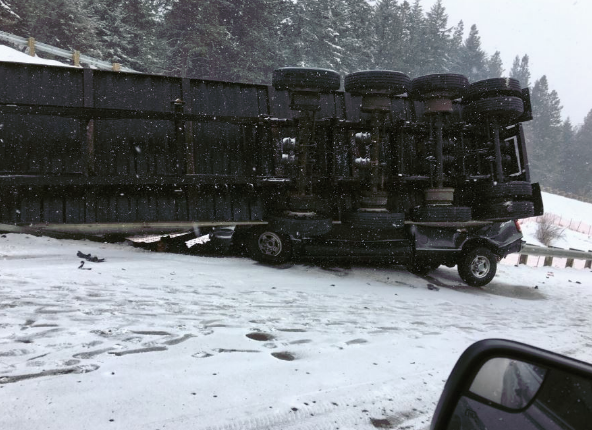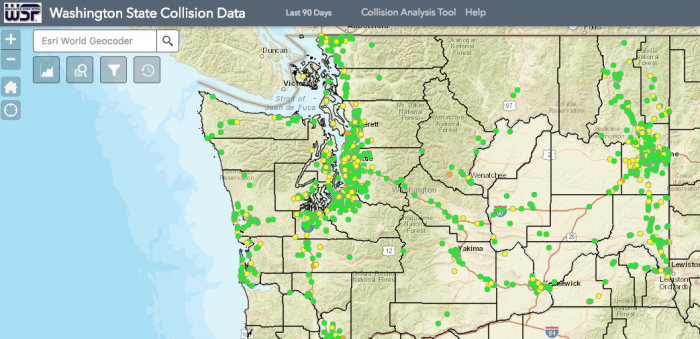This past week, a semi-truck flipped over on I-405 in Bellevue around 5 a.m.
Amazingly, no one was seriously injured … but traffic was backed up for hours, at one point stretching 7 miles down the highway. The Washington State Patrol (WSP) later cited the trucker for driving too fast for rainy conditions.
At 4 a.m. the day before, a semi-truck hit the guardrail and rolled over around on I-5 in Chehalis. The driver had fallen asleep.
On Tuesday, March 7, a semi-truck rolled onto a pickup truck on I-90 near Cle Elum.

A pickup truck ended up under a semi after a truck crash
(Photo: Washington State Patrol)
And, if you live or work anywhere near Seattle, you know about February’s traffic disaster. A semi-truck carrying propane rolled over in downtown Seattle. I-5 was closed for nearly 8 hours.
The trucker told the WSP that traffic in front of him slowed, and he was unable to stop. He plowed into four other vehicles before the truck rolled over.
The same day, I-90 closed at Snoqualmie Pass: another semi-truck crash. (Note: Coluccio Law does not refer to predictable, preventable truck crashes as “accidents.”).
I happen to pay close attention to crash reports in Washington State, mostly because of my professional interest in holding the trucking industry accountable.
But even casual newsreaders may have noticed truck crashes in the state have caused a lot of problems for a lot of people this year.
Are there really more semi-truck crashes —or have they just been more visible?
Since a couple of these recent incidents have caused major public disruptions and garnered a lot of news coverage, I wondered if this idea was just my perception.
It turns out we don’t have to wonder: the WSP maintains very comprehensive motor vehicle crash data.

In the first 75 days of 2017, there were 136 crashes involving semi-trucks in Washington.
For comparison, there were 85 semi-truck crashes in first 75 days of 2016.
In the same period in 2015: 113 crashes.
What explains the truck crash spike in 2017?
How do we account for a shocking 62% increase in semi crashes this year?
My initial thought: weather. It’s been a particularly wet year in the Pacific Northwest; perhaps weather conditions are a contributing factor.
The WSP reported 23,708 total crashes so far in 2017 (that is all the motor vehicle crashes that merited a report, not all caused injuries or significant damages).
That’s actually fewer total crashes that the same period of 2016 – 25,519.
If rainy or snowy road conditions could contribute to more truck crashes, then they would lead to more car crashes, too.
Weather may be contributing to this increase in semi-truck crashes, but it can’t be the only factor.
What do you think is causing this?
What should be done—if anything—to stop it?
Tell me @kevincoluccio

Yes, semi-truck crashes are way up in Washington this year …

Leave A Comment